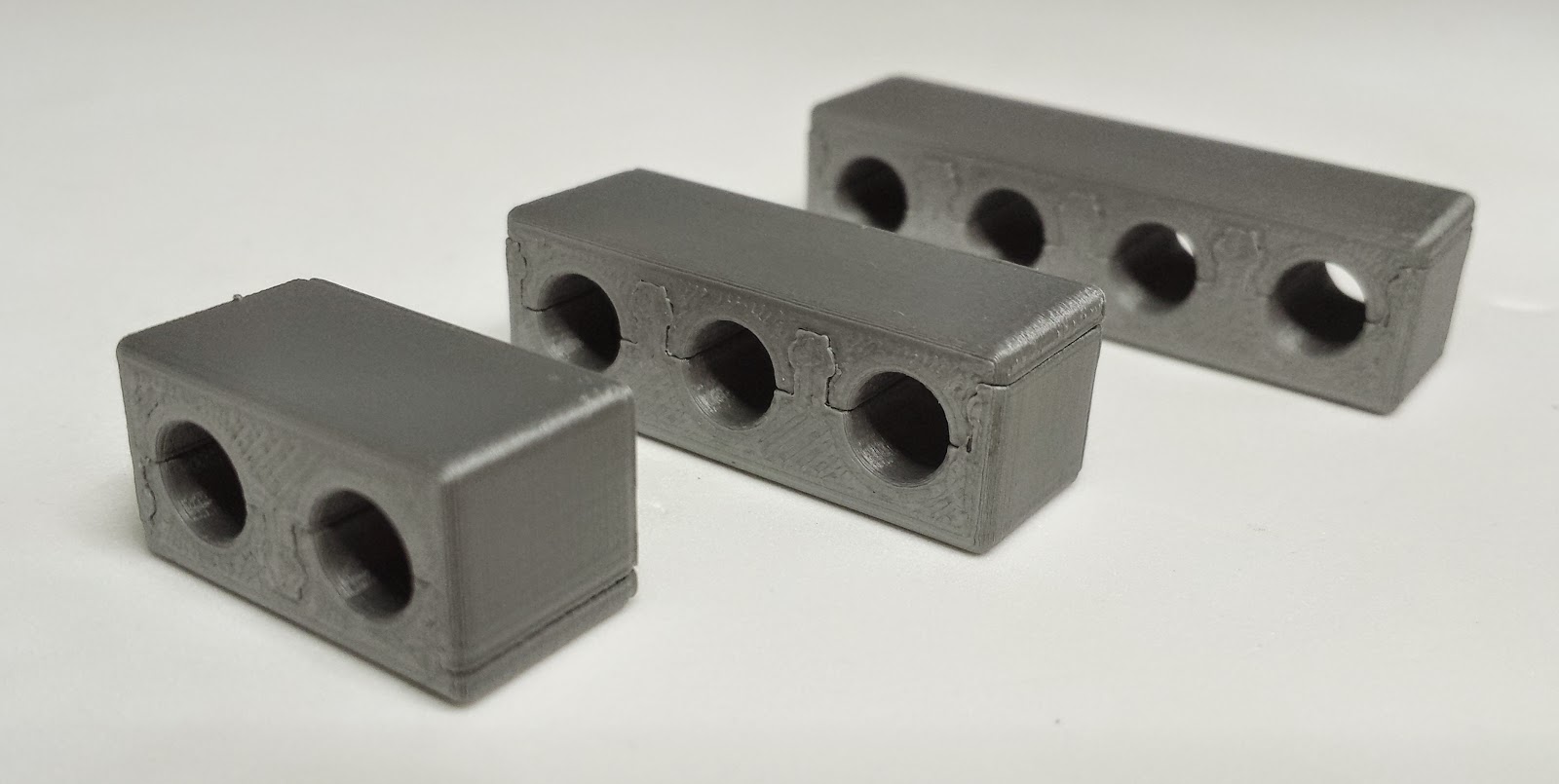 |
| stock surface finish of a high quality print |
Summary: Sand and polish your parts to remove any hint that it came from a 3D printer.
I have been extremely impressed by the surface finish of the high quality prints from my UM2. On many of the things I have printed, I have come to appreciate the very fine layers and lines of the print. They prove that the object is printed and that just makes the object that much more amazing when showing it off to friends. However there are times when you want to hide the printed quality of the print. There are many different finishing techniques for printed parts. I decided to try a few techniques on a scrap PLA part that warped during printing.
Sanding
First, I tried sanding the part. I started by sanding the surface with 220 grit sandpaper. This removed any trace of the layers but left visible sanding marks.
 |
| 220 grit sandpaper |
I followed that up by wet sanding with 600 grit waterproof sandpaper. The water really makes the sanding easier as the part does not stick to the paper and the PLA does not heat up and clog the paper if you apply too much pressure. As a bonus, the water keeps the sanding dust from getting everywhere. The 600 grit left a matte surface that was smooth to the touch. The sanding marks were visible up close in the right light but disappeared if you moved the model away by just a few inches.
 |
| 600 grit wet sand |
Lastly, I tried #0000 steel wool. This removed all sanding marks. After this step there was no trace of the layers or sanding marks. The surface had a nice even semi-gloss finish that looked like a molded part.
 |
| 600 grit (L) vs. #0000 steel wool (R) |
Polishing
With the sanding marks removed, I wanted to see if I could get the PLA to shine. Starting with the #0000 steel wool surface finish, I used
Novus platic polish. Normally, you start with #3 and work your way to #1. I skipped #3 as it is designed to remove heavy scratches. The #2 Fine Scratch Remover definitely brought some shine to the part. But the polish gets into all the nooks and crannies and made any fine scratches more noticeable. The #1 Clean and Shine just seems to be a cleaner, it didn't add any polish to the part. If you need more shine on your part, like for a clear piece, I would just purchase the #2 formula. But it's a lot of extra work for a finish that isn't much better than the #0000 steel wool.
 |
it's hard to make out in the photo, but the polished side (R)
has a little more shine |
Sandblasting
Just for the heck of it, I hit the piece with 80 grit silicone carbide in my sandblasting cabinet. It didn't seem to do much in the way of smoothing and it made the surface very dirty. I don't recommend it. Maybe blasting with baking soda would work better as anything caught in the part would dissolve in water leaving a clean surface?
 |
| sandblasted area on right |
Acetone Vapor
This technique involves melting the surface of the part with acetone vapors to smooth out the print lines. I personally don't care for the look, it destroys a lot of the detail and the part often looks like it melted. But I can see some instances where that look might be appropriate. I definitely would not use it on parts that need to be glued together as I think the parts would distort too much to get an invisible glue joint. If you had to, I would do it after I glued the parts together.
First I just tried sealing the part in a Ball jar with some acetone in it. Over two hours later I still could not see any effect on the part so I removed it. I tried again, this time leaving the lid of the Ball jar on loose. I also put the jar on a mug warming plate to heat the acetone and speed up the process. Five hours like that and still no appreciable effect!
 |
| 5 hours of acetone |
The print lines are still visible, not even close to the glossy melted look I have seen on other prints. Maybe the MatterHacker PRO Series PLA is resistant to acetone? The part softened and distorted, especially where the corners touched the jar. But the surface did not smooth out. I'm done with acetone for now. Apparently it's not as easy as it looks. I'll try again if I ever have a part that I want that look on.
























































